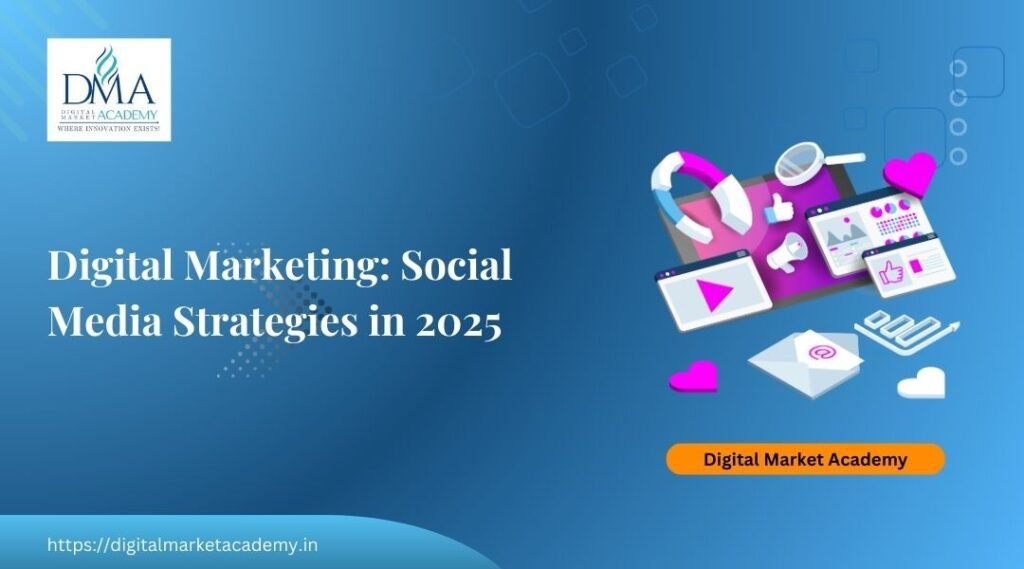
Introduction
Since its inception, social media has undergone tremendous transformations, evolving from simple networking sites to sophisticated platforms for communication, entertainment, and commerce. As we approach 2025, the pace of change shows no signs of slowing down. Strategies that once worked may no longer be effective, making it crucial for brands to stay ahead of the curve. This blog delves into the social media strategies that will shape the landscape in 2025, providing insights and actionable tips for marketers.
Social Media Strategies for 2025
1. Embracing Emerging Platforms
Identifying New Platforms
The social media landscape is constantly shifting, with new platforms emerging regularly. To stay ahead, brands need to be vigilant in identifying and evaluating these new platforms. Keeping an eye on tech news, attending industry conferences, and participating in online communities can provide early insights into emerging platforms.
Early Adoption Benefits
Being an early adopter offers several advantages, such as less competition, higher organic reach, and the opportunity to establish a strong presence before the platform becomes saturated. Brands can experiment with different content formats and engagement tactics to find what resonates with their audience.
Case Studies
Brands like Wendy’s and Netflix have successfully adopted new platforms like TikTok, creating viral content and engaging with younger audiences. By experimenting with humorous and relatable content, these brands have managed to build a loyal following on emerging platforms.
2. Leveraging AI and Machine Learning
AI for Content Creation
AI tools like GPT-3 can assist in generating high-quality content quickly. These tools can help create engaging posts, articles, and even video scripts, allowing marketers to focus on strategy and creativity. AI can also analyze data to identify trending topics and suggest content ideas.
Personalization
AI-driven personalization will be key to engaging users. By analyzing user data, AI can deliver personalized content that aligns with individual preferences and behaviors. This includes tailored recommendations, personalized ads, and customized messaging.
Automation
Automation tools can streamline social media management by scheduling posts, monitoring engagement, and responding to comments. This not only saves time but also ensures consistent and timely communication with the audience.
3. Enhancing User Engagement
Interactive Content
Interactive content such as polls, quizzes, and live Q&A sessions can significantly boost engagement. These formats encourage users to participate actively, fostering a sense of community and increasing the time spent on the platform.
Community Building
Building a loyal and engaged community requires more than just posting content. Brands need to foster genuine interactions, respond to comments, and create spaces where users can connect with each other. This could include creating private groups, hosting virtual events, or running community challenges.
User-Generated Content (UGC)
Encouraging users to create and share content related to the brand can build trust and authenticity. Brands can run contests, feature user posts on their official pages, and create hashtags to promote UGC.
4. Video Content Dominance
Short-Form Videos
Platforms like TikTok and Instagram Reels have popularized short-form videos. Brands should leverage these formats to create catchy and shareable content. Tips, tutorials, and behind-the-scenes glimpses can capture audience interest.
Live Streaming
Live streaming offers real-time interaction with the audience. Brands can use live streams for product launches, Q&A sessions, and behind-the-scenes tours. Engaging viewers through live comments and questions enhances the sense of connection.
Shoppable Videos
Shoppable videos integrate commerce with video content, allowing viewers to purchase products directly from the video. This seamless shopping experience can drive sales and enhance user convenience.
5. Augmented Reality (AR) and Virtual Reality (VR)
AR Filters and Effects
AR filters and effects can create fun and immersive experiences on platforms like Instagram and Snapchat. Brands can develop branded AR filters that users can share, increasing brand visibility and engagement.
VR Events and Experiences
Hosting VR events and interactive experiences can provide a unique and memorable way for users to interact with the brand. This could include virtual concerts, product demos, and immersive storytelling.
Product Visualization
AR and VR can enhance product visualization, allowing users to see how products would look in their environment. This technology is particularly useful for industries like fashion, home decor, and automotive.
6. Influencer Marketing Evolution
Micro and Nano Influencers
Micro and nano influencers, with their smaller but highly engaged audiences, will become more valuable. These influencers often have a closer connection with their followers, resulting in higher trust and authenticity.
Long-Term Partnerships
Building long-term partnerships with influencers can yield better results than one-off collaborations. Long-term relationships allow influencers to integrate the brand into their content more naturally and authentically.
Transparency and Authenticity
Ensuring transparency and authenticity in influencer collaborations is crucial. This includes clearly disclosing sponsored content and working with influencers whose values align with the brand.
7. Ethical and Inclusive Marketing
Data Privacy
With increasing concerns about data privacy, brands must implement transparent data privacy practices. This includes obtaining explicit consent, clearly explaining data usage, and ensuring data security.
Diversity and Inclusion
Creating content that reflects diverse audiences is essential for building an inclusive brand. This includes representing different cultures, genders, abilities, and age groups in marketing campaigns.
Social Responsibility
Aligning social media strategies with ethical and social causes can build a positive brand image. Brands can support social causes, promote sustainability, and engage in corporate social responsibility initiatives.
8. Analytics and Data-Driven Decisions
Advanced Analytics Tools
Leveraging advanced analytics tools can provide deeper insights into audience behavior and campaign performance. Tools like Google Analytics, Sprout Social, and Hootsuite can help track key metrics and measure ROI.
Real-Time Monitoring
Real-time monitoring allows brands to respond promptly to trends, feedback, and engagement. This agility is crucial for maintaining relevance and maximizing the impact of social media campaigns.
Predictive Analytics
Predictive analytics can forecast trends, customer preferences, and potential outcomes. By analyzing historical data, brands can make informed decisions and stay ahead of the competition.
9. Multi-Channel Strategies
Integrated Campaigns
Integrated campaigns ensure that your messaging is consistent and cohesive across all social media channels. For example, if you’re launching a new product, you might create a teaser campaign on Instagram, share detailed product information on Facebook, and use LinkedIn for industry-specific insights. Each platform serves a different purpose but collectively contributes to a unified brand message.
Cross-Platform Content
It’s important to tailor your content to suit the unique characteristics of each platform while maintaining a consistent brand voice. For instance, a blog post on your website can be repurposed into a series of Tweets, an infographic for Pinterest, a short video for TikTok, and a detailed post on LinkedIn. This approach ensures that you reach your audience wherever they are while maximizing the lifespan and reach of your content.
Omni-Channel Experience
An omni-channel strategy focuses on providing a seamless and integrated customer experience across all channels. This means that whether a customer interacts with your brand on social media, your website, or in-store, their experience should be consistent and connected. This can be achieved by integrating your CRM with social media platforms, using consistent branding and messaging, and ensuring that customer support is accessible across all touchpoints.
10. Future Trends and Innovations
Voice Search and Commands
Voice search is set to play a significant role in how users interact with social media. Platforms are likely to integrate more voice-activated features, allowing users to search for content, navigate through apps, and interact with brands using voice commands. Marketers should optimize their content for voice search by focusing on natural language and conversational keywords.
Blockchain in Social Media
Blockchain technology has the potential to revolutionize social media by enhancing data security and content ownership. With blockchain, users can have more control over their data, and content creators can protect their intellectual property. This technology can also enable transparent and secure transactions, such as tipping content creators or conducting secure ad transactions.
Sustainability in Digital Marketing
As environmental concerns grow, consumers increasingly seek brands that align with their values. Embracing sustainability in your digital marketing strategy can help build a positive brand image. This can include promoting eco-friendly products, using sustainable practices in your marketing efforts, and supporting environmental causes through social media campaigns.
Conclusion
The future of social media marketing is full of exciting possibilities. By embracing emerging platforms, leveraging AI and machine learning, enhancing user engagement, and staying ahead of technological advancements, brands can create effective and innovative social media strategies. Ethical and inclusive marketing practices, combined with data-driven decision-making, will be key to building trust and connecting with audiences in meaningful ways. As we move into 2025, marketers need to stay agile, continuously learn, and adapt their strategies to thrive in the ever-evolving digital landscape. To stay ahead in digital marketing join our basic to advance Digital Marketing Course.
Remember, the strategies discussed here are just the beginning. The social media landscape will continue to evolve, and staying informed about new trends and technologies will be crucial for success. Here’s to a dynamic and innovative future in social media marketing!

Rajesh Menon is a leading digital marketing trainer and strategist based in Bangalore, with over 15 years of experience in SEO, advertising, and digital growth planning. As the Founder and CEO of Digital Market Academy, he is known not just for his ability to teach, but for his visionary thinking and deep strategic insight.
At the academy’s Kasturinagar center, Menon leads classroom training programs and digital marketing boot camps. He also conducts on-campus sessions at colleges for undergraduate and postgraduate students, and provides digital enablement workshops for MSMEs and startups. His approach blends practical execution with long-term strategy, making him a trusted mentor for aspiring marketers and small business owners alike.
Rajesh writes regularly on the Digital Market Academy blog, and also shares expert content on Medium and LinkedIn, where his work is followed by both learners and industry peers.
You can find links to his Medium and LinkedIn profiles in the author box below.




